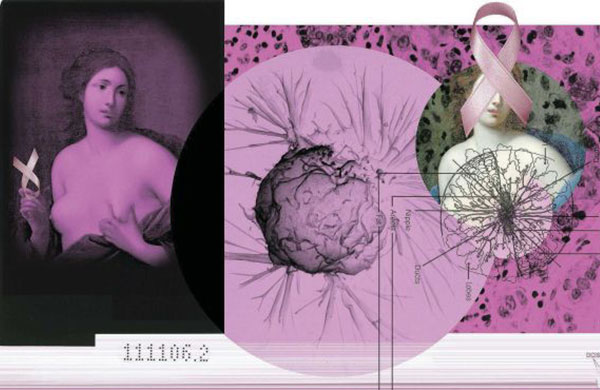 Sometimes, modern medicine pushes past science and into the realm of science fiction. The artificial heart and hip replacements were certainly in that category. Other breakthroughs have less of a “wow” factor, but offer relief and comfort where there was once pain and suffering. There were many amazing breakthroughs in medicine this year (unfortunately, a cure for the common cold is not among them). Although all the discoveries were made recently, some may not be available for years to come. Here’s a look at the remarkable therapies and game-changing technologies expected to dramatically reshape healthcare and save lives.
Sometimes, modern medicine pushes past science and into the realm of science fiction. The artificial heart and hip replacements were certainly in that category. Other breakthroughs have less of a “wow” factor, but offer relief and comfort where there was once pain and suffering. There were many amazing breakthroughs in medicine this year (unfortunately, a cure for the common cold is not among them). Although all the discoveries were made recently, some may not be available for years to come. Here’s a look at the remarkable therapies and game-changing technologies expected to dramatically reshape healthcare and save lives.
Lung Washing
Many people who need lung transplants can’t get them, due to a shortage of donor organs. Many lungs are damaged and unsuitable for transplant. A new “lung washing” technology—ex vivo lung perfusion—can reverse injuries in donor organs by treating them with proprietary fluids and, if needed, medications to clear infections. Experts estimate that up to 40% of lungs currently rejected for transplant could be repaired with this technology, which is already approved in Europe and Canada.
Drugs for Prostate Cancer
Five new drugs have been approved for advanced prostate cancer. Many experts believe that these drugs and others that are in development could ultimately turn advanced prostate cancer into a manageable disease.
Nerve Stimulator for Severe Headaches
For patients with excruciating headaches, a tiny, almond-sized implant can block the pain without drugs. The nerve stimulator is placed inside a small surgical incision in the upper gum. Patients activate the pain-blocking implant with a remote control whenever they feel a headache coming on. In European studies, 68% of patients with cluster headaches responded to neuromodulation therapy.
Radio Waves to Lower High Blood Pressure
About half of the 1.2 billion people worldwide with high blood pressure aren’t controlling it, and 20% of them don’t respond to conventional treatment. Researchers have found that some radio frequencies will disable certain nerves in kidneys to significantly lower blood pressure. The treatment involves a catheter, but doesn’t require major surgery. It is already approved in Europe and should be widely available in the US in about two years.
Heart Attack Detection

A new imaging technique could find people at highest risk of a heart attack. There is currently no accurate way to do this, but a new test detects fatty plaque on the brink of rupture. Over 90% of people scanned, who had had a heart attack recently, had a lit-up area in a blood vessel, corresponding exactly to the location of the plaque that caused the heart attack. Around 40% of patients with angina also had plaque that lit up yellow, as well as high-risk features that suggested a heart attack might be imminent, and aggressive treatment would be required. Being able to identify dangerous fatty plaques likely to cause a heart attack is something that conventional heart tests can’t do. This research suggests that the imaging technique could identify ‘ticking time bomb’ patients.
Artificial Lymph Nodes
Scientists from Japan’s RIKEN Institute have developed artificial versions of lymph nodes, organs that produce immune cells for fighting infections. Though they could one day replace diseased nodes, the artificial ones may initially be used as customized immune boosters. Doctors could fill the nodes with cells specifically geared to treat certain conditions, such as cancer.
3D Mammography
This new diagnostic imaging technology has already received FDA approval. It can be performed along with a traditional mammogram for more accurate screening. The x-ray arm of the machine takes dozens of images at various angles that are then merged into a 3D image. Preliminary study results in 25,000 women report a 47% rise in cancer detection when it was used.
External Artificial Pancreas
The artificial pancreas will hit the US market within five years. It will be a boon for diabetics who have trouble keeping blood sugar levels in check. The device monitors blood sugar and then administers and adjusts insulin automatically using a computerized insulin pump. One early version, which stops the flow of insulin when glucose levels are too low, is already available overseas and will begin US trials soon.
Cancer Vaccines
There is no cure for cancer, but new approaches are being developed to aggressively fight some forms of the disease and to limit debilitating side effects. Vaccines to treat pancreatic and ovarian cancers, melanoma, multiple myeloma and a form of lung cancer are in development but have not yet moved into the FDA approval pipeline. New treatments for soft tissue and bone sarcomas; pancreatic cancer; prostate, ovarian and liver cancers; head and neck cancers are also in the works.
Handheld Scan for Melanoma
More than 76,000 Americans develop melanoma—the deadliest form of skin cancer—annually. A new FDA-approved handheld device uses imaging technology (developed by the military to guide missiles) for non-invasive analysis of moles and suspicious skin areas. Light of 10 different wavelengths penetrates the skin, then computer software compares the findings to 10,000 archived images of melanoma and other skin cancers. In a clinical trial of 1,300 patients, the device correctly identified 98% of melanomas.
Saliva-Based Cancer Test
Forget biopsies—a device designed by researchers at the University of California–Los Angeles detects oral cancer from a single drop of saliva. Proteins that are associated with cancer cells react with dyes on the sensor, emitting fluorescent light that can be detected with a microscope. The same principle could be applied to make saliva-based diagnostic tests for many diseases.
Medical Flash Drive
Within five years, you’ll be able to carry all your medical records, including lab work and X-rays, on a flash drive. The device will be encrypted to prevent hacking. A doctor or specialist will be able to download the information.
Treatment for Osteoporosis
University of Sydney researchers have discovered a promising new treatment for osteoporosis, which is easily delivered in water soluble form. After more than four years of investigation, researchers say the treatment has shown very promising results in animal experiments. The compound is called picolinic acid. When this medication was administered in water to normal and menopausal mice, it strongly and safely increased bone mass in normal mice and rescued bone from menopause-associated osteoporosis. The team will expand their trials to humans in the near future.
Smart Contact Lenses
Glaucoma, the second-leading cause of blindness, develops when pressure builds inside the eye and damages retinal cells. Contact lenses developed at the University of California–Davis contain conductive wires that continuously monitor pressure and fluid flow within the eyes of at-risk people. The lenses then relay information to a small device worn by the patient; the device wirelessly transmits it to a computer. This constant data flow will help doctors better understand the causes of the disease. Future lenses may also automatically dispense drugs in response to pressure changes.
Artificial Retina
 An artificial retina is being developed by Second Sight Medical Products Inc. The technology, called Argus II, converts images from a tiny camera in a person’s glasses into small electrical pulses transmitted to electrodes that are implanted on the retina. Vision is limited, but testing has enabled sightless people to find doors and sidestep obstacles. Some users can even read large print with the device’s help. It is available in Europe now but probably won’t be approved in the US for a year or two. A new artificial cornea is also a couple of years away from the US market. An implant is in development that doesn’t rely on donor tissue. The device is designed to replace the section of the cornea that focuses light, which is necessary to see. This version is flexible, so it will require a smaller incision than other implants. That will mean a shorter recovery period and fewer complications.
An artificial retina is being developed by Second Sight Medical Products Inc. The technology, called Argus II, converts images from a tiny camera in a person’s glasses into small electrical pulses transmitted to electrodes that are implanted on the retina. Vision is limited, but testing has enabled sightless people to find doors and sidestep obstacles. Some users can even read large print with the device’s help. It is available in Europe now but probably won’t be approved in the US for a year or two. A new artificial cornea is also a couple of years away from the US market. An implant is in development that doesn’t rely on donor tissue. The device is designed to replace the section of the cornea that focuses light, which is necessary to see. This version is flexible, so it will require a smaller incision than other implants. That will mean a shorter recovery period and fewer complications.
Autonomous Wheelchairs
MIT researchers have developed an autonomous wheelchair that can take people where they ask to go. The chair learns about its environment by listening as a patient identifies locations—such as “this is my room” or “we’re in the kitchen”—and builds maps using Wi-Fi. The current model, which is now being tested, may one day be equipped with cameras, laser range finders and a collision-avoidance system.
Medication Dispensing Through Wireless Controller
Researchers are studying how a wireless chip, implanted in a patient’s hip, can help administer medications on a regular basis. Via a wireless controller, the patient’s physician can adjust dosages and dispense times. This will be especially helpful for patients with chronic diseases who must remember to take daily pills at specified times.



